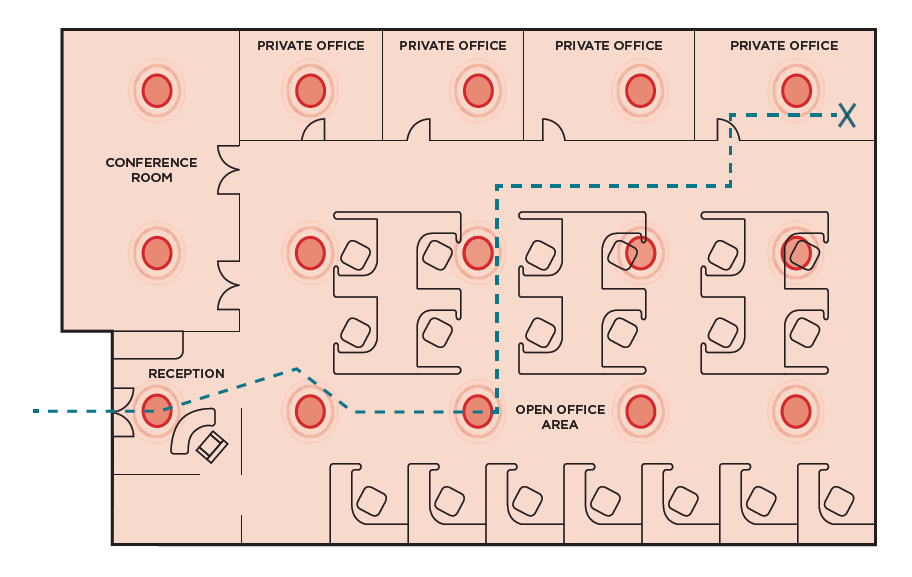If you were tasked with installing office lighting, would you save a few bucks by specifying fewer fixtures and thereby creating a workplace environment with annoyingly inconsistent lighting? Probably not.
But sound masking system designers sometimes under-specify the number of loudspeakers needed to achieve a uniform masking system. And while it’s true that fewer loudspeakers means a lower cost, it also means poor sound masking performance. That’s because without the proper number of speakers—installed in a consistently spaced grid pattern—there’s little to no uniformity, which results in a sound masking system that’s noticeable, thereby becoming a distraction that adversely affects employee comfort and productivity and totally defeating the purpose of sound masking!
Simply put, sound masking should be unwavering, constant and unchanging. Any hot spots, dead spots, or other changes to the output increase the likelihood of the occupants noticing it. Thus, sound masking is often installed even in spaces where we are not necessarily concerned with speech privacy—such as hallways, reception areas, lobbies, and transitional areas—to ensure uniform coverage.

Building occupants should move throughout the environment (e.g., from the lobby, down a corridor and through open-office areas) without noticing variations in output.
Office acoustic variables that increase noise distractions and are detrimental to speech privacy, employee comfort and productivity, are also likely to become more prevalent in our post-COVID-19 “new normal” office environments. This is yet another reason why a sound masking system—with uniform coverage—should be a key consideration when designing office environments that enable workplace collaboration and productivity free of acoustic-related impediments.
To learn more about the many benefits of a properly designed and installed sound masking solution, we provide numerous helpful resources available at Biamp’s website, soundmasking.com.